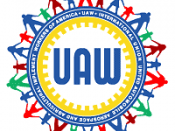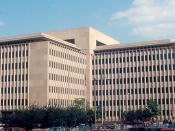Executive Summary At the end of 1991, Caterpillar Incorporated, the world?s largest maker of heavy industrial engines and earth-moving equipment, faced mounting financial losses, poor labor relations, and a lackluster market. The previous decade saw the company post its first loss causing the chief executive officer (CEO) to admit, ?Almost overnight the world changed on us.? Ever since its foundation in 1925, Caterpillar has led the heavy industrial equipment through innovation and value-added services. It was the first company to introduce a diesel tractor. The 1970s saw the launch of the most technologically advanced tractor in the world featuring a design that reduced repair and down time by as much 80% than conventional models. Innovative designs and post-sales support commanded high premiums for Cat products and customers were willing to pay.
In the early 1980s, several factors combined to undermine Caterpillar?s seemingly invincible market position. Commodity prices dramatically declined impacting Caterpillar?s primary market segment, the heavy equipment used in mining, forestry, and oil drilling.
Secondly, the US dollar rose in value against the Japanese Yen, effectively presenting Cat?s largest competitor, Komatsu, a 40% price advantage. In addition to these economic factors, labor relations reached a crisis point culminating in a seven-month strike in 1982.
Caterpillar management responded to the crisis by launching a giant restructuring program reducing its labor force and equity by forty and twenty-eight percent respectively. It also began to look to new markets, particularly the smaller construction contractors. To preserve market share in its core businesses, it slashed it prices- and profits to compete with Komatsu of Japan. Although losing eleven percent market share, it pricing strategy did prevent an almost certain larger loss of market share.
The company returned to profitability in 1985, but management recognized that the company?s long-term prosperity was far from certain.


